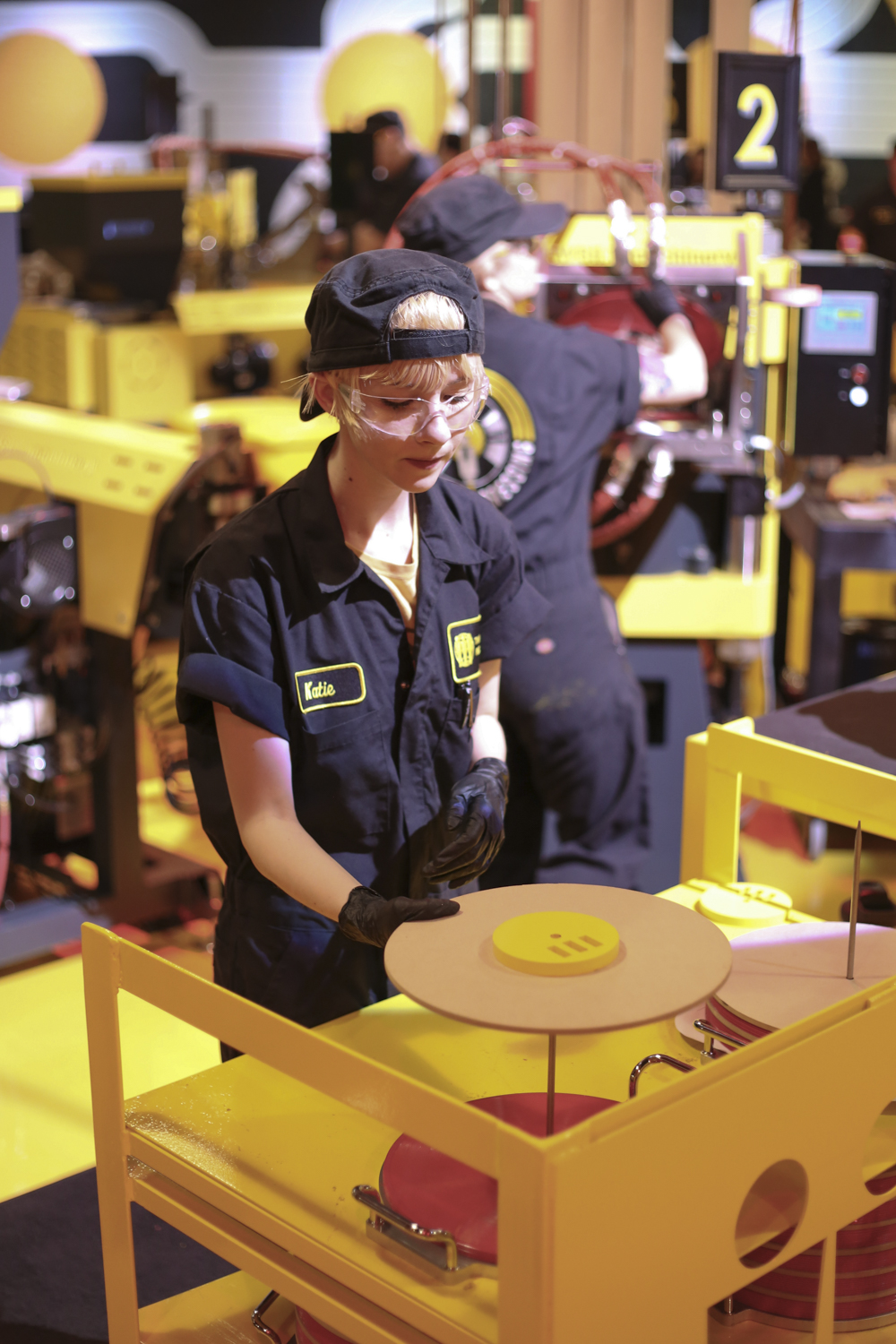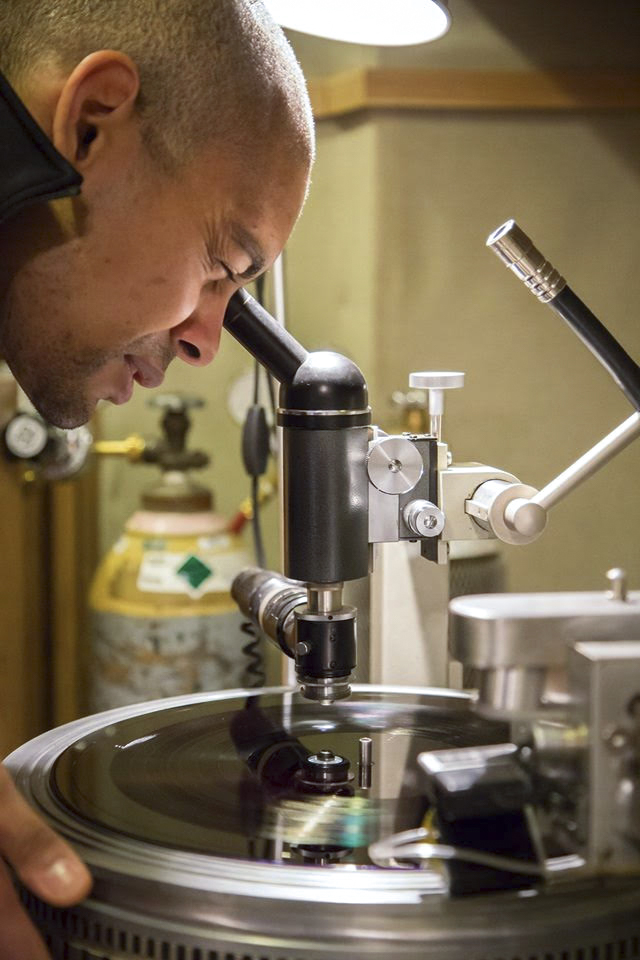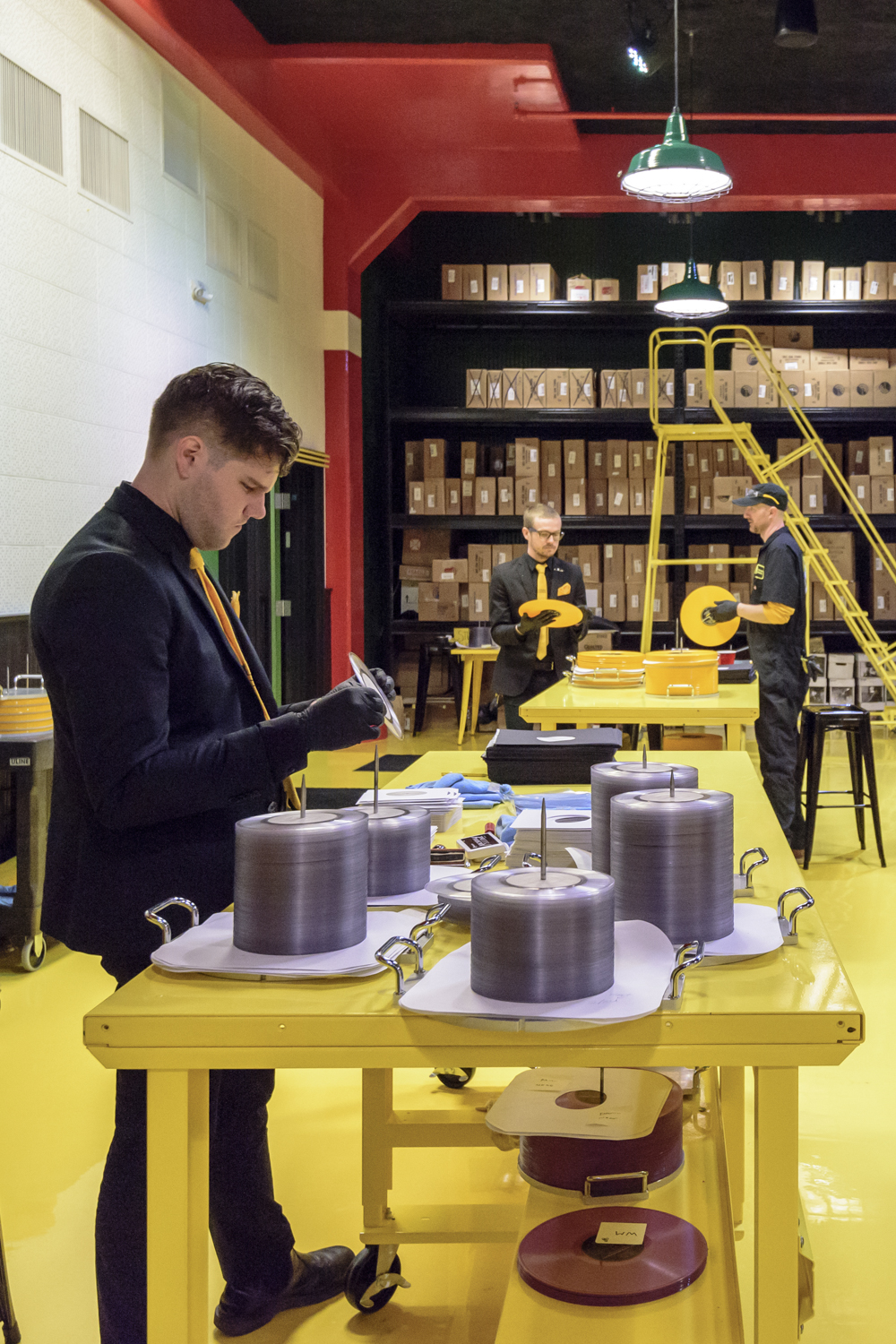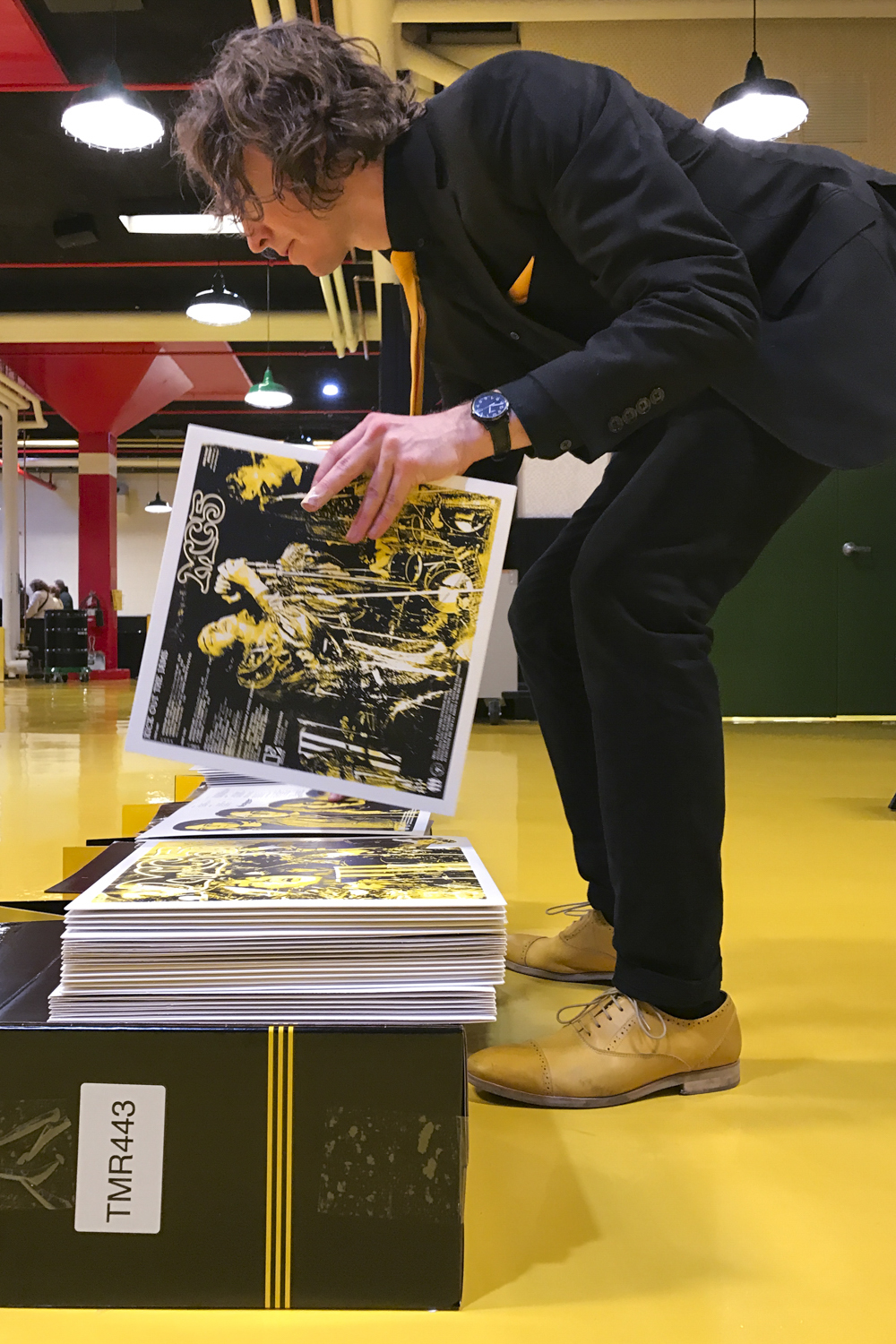For the past ten years, the world of vinyl production has been spinning faster and faster.
The record revival has been a well-publicized success story in recent years, offering a glimmer of hope for the ailing music industry. In 2015, the format made more money in the first half of the year — $220 million — than YouTube, Vevo, and ad-based Spotify streams combined, and sales are expected to top $1 billion this year. Popular events like Record Store Day and subscription services like Vinyl Me, Please usher stacks of wax into the homes, apartments, and dorm rooms of nostalgic music fans who spent their formative years without a 12-inch album cover between their fingers.
But there is an oft-overlooked underside to the story of how vinyl sales increased from just under a million units stateside in 2007 to an astonishing 13,000,000 last year alone. Those millions of records had to be manufactured somehow, and until very recently, the equipment used to make them was nearly as ancient as the format itself.
How it’s made
Until recently, the equipment used to make records in the United States was nearly as ancient as the format itself.
“There’s a trifecta of getting a record made,” says vinyl mastering engineer Adam Gonsalves of Telegraph Audio Mastering in Portland, OR. “There’s mastering, there’s plating, and there’s pressing.”
It works like this: A mastering engineer uses a specially made lathe to cut waveforms of songs from your favorite band in a spiral on a lacquer disc. That disc is then sent to an electroforming facility, where it is coated in a thin layer of metal to make a “mother plate.” This plate is then used to make what the industry calls “stampers”— a group of discs that are placed in a record press to form each side of a record in their own image.
The stampers are then sent to a pressing plant, where physical presses squeeze hot discs of vinyl between them with one-and-a-half tons of force, imprinting the audio. The records are then trimmed, packaged, and shipped off to labels, bands, distributors — and ultimately to you.
It may seem simple enough, but there is very little room for error at any point in the process. One tiny mistake, and an entire batch could be ruined. The recent uptick in demand for records created a serious bottleneck in the vinyl production process. As orders for physical records skyrocketed, those interested in opening new pressing plants had to find the equipment they needed. That was a problem.
“Everybody who built [the original equipment] is fucking dead,” chuckles Gonsalves. “Just because a generation decided all at once that it was worthwhile to have physical media for music again, does not mean that the world of manufacturing was able to snap to that command.”
The last American-made pressing gear hit the market in the mid-1980s, but the vast majority of vinyl manufacturing equipment in North America was built decades earlier when vinyl was the primary means of music consumption. Over the past 50 years, the old presses and lathes have been slowly breaking down, put in long-term storage, or cannibalized for parts.
Back from the brink
Of the 2,000 or so working lathes ever built, Gonsalves estimates about 1,200 are still functional. But there are only about 70 total left in North America. While plating equipment has continued to be made because of its use in industries like the medical field, at one point there was only one large, independent facility left in the country that was making plates for records.
Until recently, the equipment used for record-making in the United States was nearly as ancient as the format itself.
The real bottleneck, though, has always been presses, which see near round-the-clock use in many plants, and require complex heating and cooling systems — and constant maintenance. Those who wanted to open pressing plants had to locate and refurbish mothballed gear that almost nobody alive knew how to operate, maintain, or repair, let alone manufacture.
Expansion happened very slowly and painstakingly, but as demand begged for more supply, it did happen. In the last ten years a dozen or so record plants — ten still in operation — and two independent plating facilities have opened around the United States and Canada. Machine by machine, year by year, progress was made, and the bottleneck began to clear.
Most importantly, new presses finally began to spring up.
Start the presses
It took years of research and millions of dollars, but today there are three international companies — Canada’s Viryl Tech, Germany’s Newbilt, and Sweden’s Pheenix Alpha — offering new record presses to plants worldwide. And now, the floodgates are finally opening.
Early this year, Jack White’s Third Man Records opened the first U.S. pressing plant in decades to use brand new machinery, installing eight tablet-controlled Newbilt machines behind its Detroit storefront. Visitors to Third Man’s record store can actually peer through a big glass window to see the plant in action as they shop.
In addition to records, new pressing plants are creating much-needed manufacturing jobs. Third Man alone hopes to employ upwards of 50 employees with living-wage salaries at its new plant, manufacturing 5,000 records per eight hour shift.
“That was the need in the industry,” says Ben Blackwell, co-founder of the label. “We needed new machines, we needed people who were able to push the industry forward [with even] the slightest bit of innovation …”
Up to now, the increase in vinyl production has stemmed from old machines being refurbished, and shuffled from company to company. New presses mean increases in overall pressing capacity is finally possible, for the first time in 30 years.
“This is a legitimate increase in the pressing capacity [of the United States],” Blackwell says, “That makes the Third Man endeavor all the more important. These are presses that didn’t exist at all last year.”
In your living room
In addition to creating new and exciting records, new pressing plants also create much-needed manufacturing jobs.
The recent increase in vinyl production means that the wait time for a new record to be pressed has gone from as much as 10 months in 2007 to as little as six weeks today. What’s more, labels and artists have more choices than ever.
“When bands called me to master their first project and they wanted it on vinyl, I used to say, ‘Here’s a list of pressing plants, just call them and go with the one with the best turnaround time,’” says Gonsalves, whose recent projects include a batch of Elliott Smith reissues and the latest Vampire Weekend record. “Now I get to say, ‘Well what kind of record are you making?’ Because there’s different experiences you can get now.”
Orders like special colors, unique designs, or other technically challenging pressings that previously wouldn’t have been possible are now steadily flowing into record stores and living rooms. Listeners now have better access to vinyl of all kinds than ever before.
“It’s an exciting time,” says Gonzalves, “If the public wants to buy it and bands are willing to put it out, the industry should be able to make that number of records. We’re finally at the point where that is actually going to happen.”
Like many Millennial-fueled industries, the vinyl manufacturing world has also moved forward with an increasingly local perspective.
“I feel like there is a regional landscape developing,” says Blackwell, “People in Detroit will press in Detroit, people in Kansas will press in Kansas.”
This is particularly appealing because of the savings on shipping costs. Independent artists and labels can save hundreds of dollars by picking up their fresh-pressed LPs in person, making it financially feasible for just about any commercial artist or label to press their music on vinyl.
The future of vinyl
Looking ahead, a lot of changes still need to take place for the record industry to thrive. The vast majority of records are still pressed on ancient equipment, while prohibitive re-engineering costs means there are currently no plans to manufacture more record lathes for mastering.
While his plant is likely the first in a wave of manufacturers with new equipment on the horizon, Blackwell sees a long road ahead.
“I feel happy, but there’s still a lot of work to do,” he says, “Not only for us, but for everyone.”
That said, as the industry continues to modernize, both the quality and diversity of records that land in our shopping carts, and ultimately on our turntable platters, is set to increase immensely over the next decade.
No longer stuck in the past, the future of vinyl looks – and increasingly sounds – better than ever.












